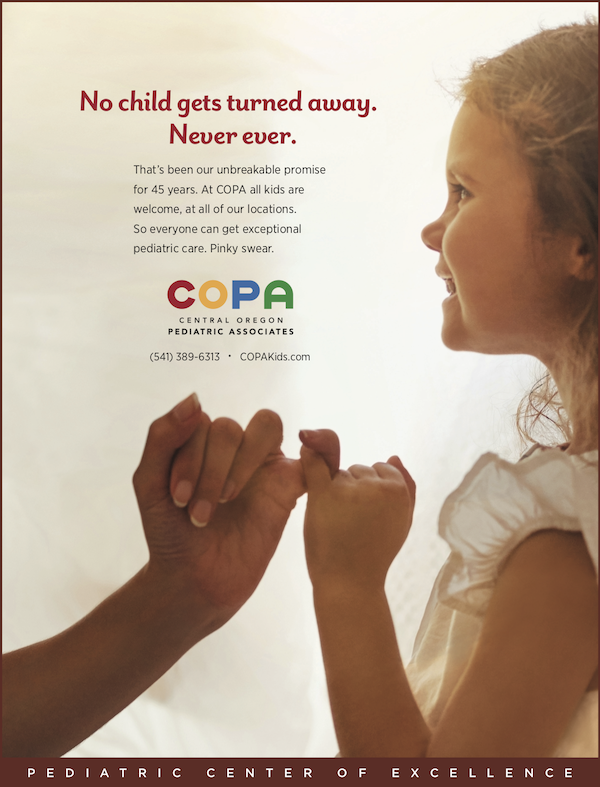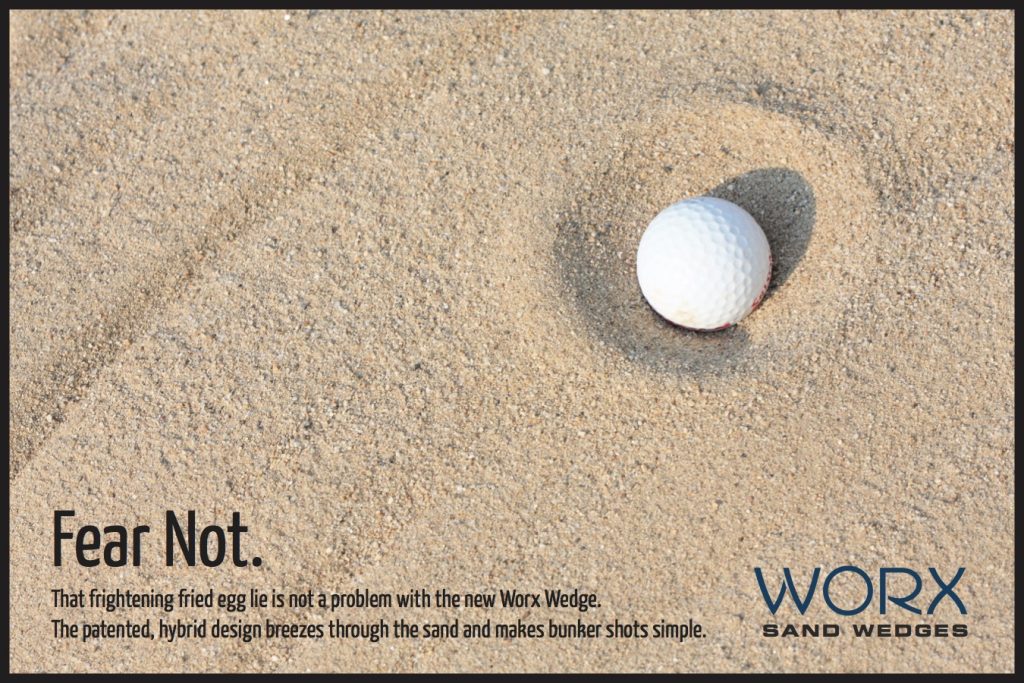![]() I have an ongoing debate with a client who says we should never, ever take a negative approach in her advertising. She believes, whole heartedly, that fear of loss — or any hint of trouble — should not be part of her brand narrative.
I have an ongoing debate with a client who says we should never, ever take a negative approach in her advertising. She believes, whole heartedly, that fear of loss — or any hint of trouble — should not be part of her brand narrative.
The debate’s been going on for years, and at this point we just agree to disagree. However, as the Creative Director on her account, it’s my job to always make sure she sees our strongest ideas. So I’ll continue to present a “negative” ad occasionally, even if I know she’s just going to kill it.
Let me be very clear… I’m not referring to trash talking ads that attack her competitors. This isn’t politics, where polling data has proven that negative ads pull better than positive ones.
I’m talking about using the fear of loss in honest, problem-oriented advertising that touches on deep-seated emotions that make people stop, notice and actually click or buy.
Let’s dissect the latest example…
The overall tone of this ad is sweet as pecan pie and perfectly on brand for Oregon’s second-largest pediatric practice.
It definitely passes the 5-second glance test…
The quick take away is “happy child,” and “promises kept.” What brand would NOT want to be associated with those two thoughts?
But there’s that headline… that “negative” angle of attack that touches a nerve with that particular client.
“No child gets turned away. Never ever.”
I don’t believe it’s a problem. In a very subtle way it poses a relevant idea that the reader has probably never thought of:
At other practices she might get turned away because of her insurance. It’s a true, tangible differentiator for this client.
Here’s a realistic reaction: “Wait, what?… some pediatricians turn kids away because of their insurance? I better check on that. I don’t want my baby to get left behind.”
The threat of getting turned down because of a stupid health insurance issue is the emotional hook of the ad.
If you turn it around and look at it through rose-colored glasses, the headline might read: “All children are always welcome. Now and forever.”
Same touching photo. Same body copy. Much weaker ad.
Here’s why:
Fear of loss usually works better than pouring too much sugar on top.
The natural reaction to that “nicer” headline is dismissive: “Of course everyone’s welcome. What kind of doctor would NOT welcome me and my newborn?”
It’s a given. And if the conclusion is a given, people skip right over it, regardless of how sweet it seems.
It’s not going to make people stop and wonder. It doesn’t contain an idea that will stick because it’s nothing but corporate sugar coating.
Sometimes the recipe calls for a touch of salt, instead.
The suggestion of being left behind in the headline (fear of loss) is just enough salt to make our prospect stop and think. And it shows that COPA really cares.
If your advertising is all pretty pictures and happy-go-lucky outcomes all the time, eventually no one’s going to believe you.
Authenticity is crucial these days. Focusing on the problem occasionally makes you more credible. It conveys the idea that you understand the prospect’s problem and makes your brand more authentic.
Look at this way: Great ads tell a story. Doesn’t matter if it’s in a 3-minute video format, print ad format, or social media format, it needs to have elements of a good story. And stories always include a villain or a problem.
Without a problem you have no meaningful solution.
Without conflict there’s no resolution.
Without a villain you have no hero.
Without trouble you have no story — just a pretty picture and a headline with no meat.
Donald Miller, in his best-seller “Building a Brand Story” talks about the challenge companies have when it comes to pointing out the downside of NOT buying a particular product or service.
“Clients don’t want to be fearmongers, but fearmongering is not the problem that 99% of business leaders struggle with. It’s just the opposite… they don’t bring up the negative stakes often enough, and their story ends up falling flat.”

Miller points out that you probably don’t want to build an entire campaign using the negative approach, and I agree with him in this case.
Happy moms with happy babies is the predominant visual tool for pediatric practices everywhere. I’m not saying we should change that, I’m just saying we should leave room for other approaches, such as this:
Every mom can relate to those times when her baby’s not being herself. That’s reality for her, and the reality of any pediatric office.
If you ignore the back door angle of attack you’re missing at least 50% of the possible creative solutions to any ad. So you’ll never know what might have been.
As a writer and advertising creative I was always taught to turn things around and look at problems from a different perspective. That training that has served me well, not just on creative assignments, but in all aspects of business.
As Alex Bogusky says, “First you have to think big. Really, really big. Then you have to sit back and think of all the ways you’re not thinking big enough.”
There are plenty of very successful brands that have done that, and built campaigns from an opposing angle of attack. Just look at the non-profit world… they always sell the problem in order to raise funds.
The World Wildlife Fund paints a clear, creative picture of what climate change might mean to people.
PETA shows nothing but sad looking animals, and they raise millions every year.
St Jude’s Children’s Hospital.
And Allstate Insurance…
The Mayhem Man campaign revolves entirely around the problem — the potential mayhem that might befall us. It’s a brilliant campaign that attacks the boring subject of insurance in a memorable, albeit “negative” fashion. They give the villain a face and paint a dramatic, lighthearted picture of what’s at stake.
It’s way more compelling than any ads showing what a wonderful, rosey life we’ll lead because of our Allstate insurance policy.
Here’s another example of the fear of loss approach from BN Branding’s portfolio.
When we helped launch the Worx Wedge we talked to a lot of golfers about their use of a sand wedge, their attitudes toward golf product marketing, and the challenges they face around the greens.
The insight from those discussions came through loud and clear… the average golfer has a completely irrational level of fear when it comes to sand traps.

To them, the potential embarrassment of being stuck in a bunker is much more poignant than any positive message of hope that we might employ. (The golf industry is riddled with hopeful bullshit promises of more distance.)
So instead of promising them roses and lower scores, we attacked the problem head on.
Fear Not.
There’s a story in these simple, two word ads… We acknowledge their fear, show that it is not unfounded, and position the Worx Wedge as the tool they need to conquer it.

Psychologists and neuroscientists have actually conducted quite a bit of conclusive research on the persuasive power of the loss-aversion pitch. Turns out, the fear of loss is often more powerful than the hope of gain.
Clifford Nass, a professor of communication at Stanford University says “Negative emotions generally involve more thinking, and the information is processed more thoroughly than positive ones, he said.
Thus, we tend to ruminate more about unpleasant events — and use stronger words to describe them — than happy ones.”

Mothers remember, quite vividly, those trips to the doctor with their screaming 6-month old. And they forget all about the positive experiences with their pediatrician.
Golfers never forget the experience of being stuck in a pot bunker during a bucket list trip to St. Andrews.
In advertising there are market realities to consider, as well. Sometimes, when you’re dealing with a me-too product in a crowded category, focusing on what the product is NOT is the better strategy, by far.
Let everyone else tout the generic product category benefits and attempt to position themselves as the hero, while you focus on the problem and let the customer be the hero in the story.
There are really only two possible outcomes for any advertising story… customers either gain something, or they lose something. Advertising your product or service as a way to avoid that loss really can work.
You just can’t be afraid of the fear of loss.
If you’d like to try a different approach to your advertising, and explore ALL the possible directions, contact me here.


